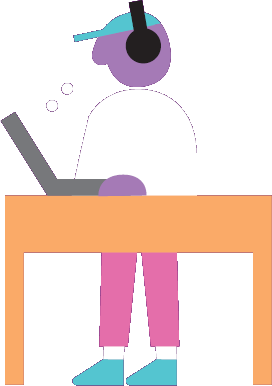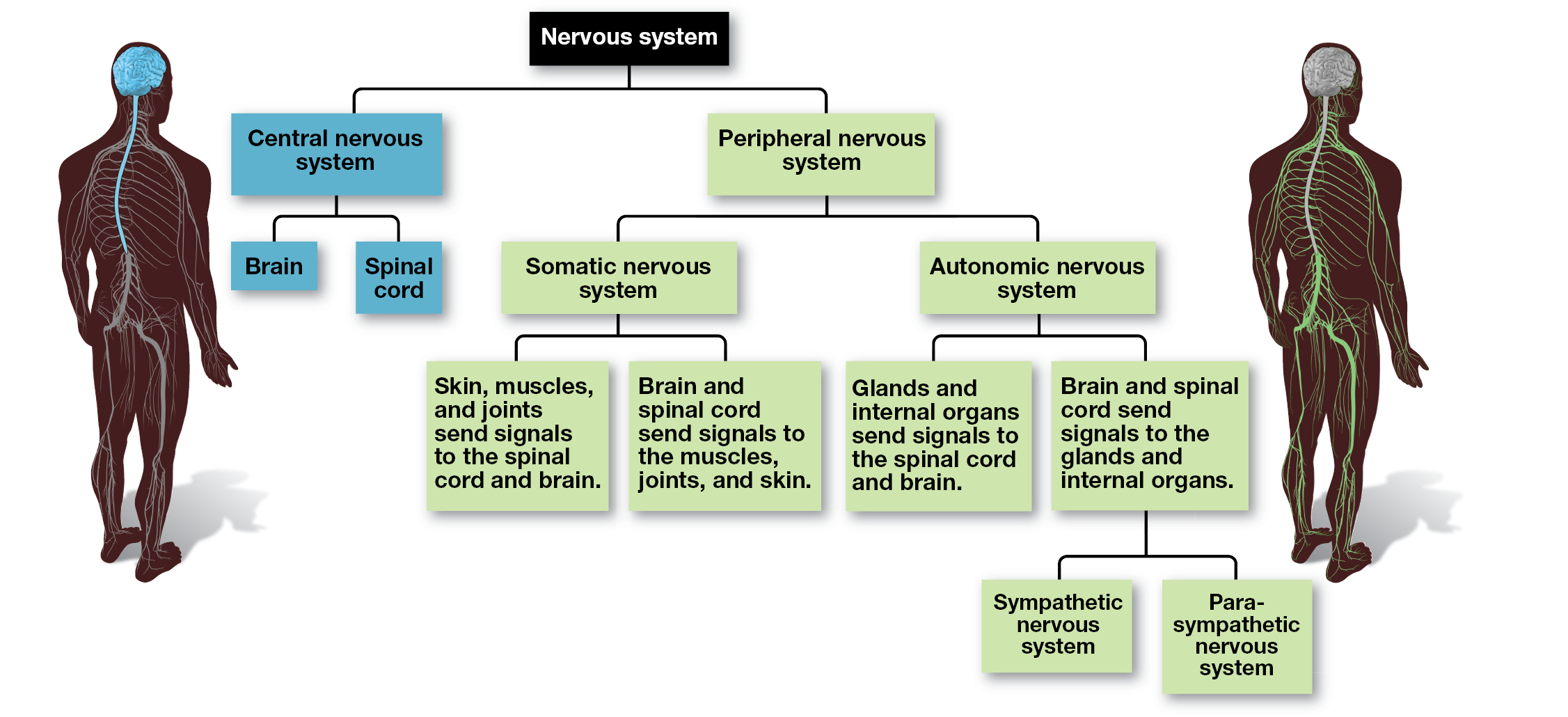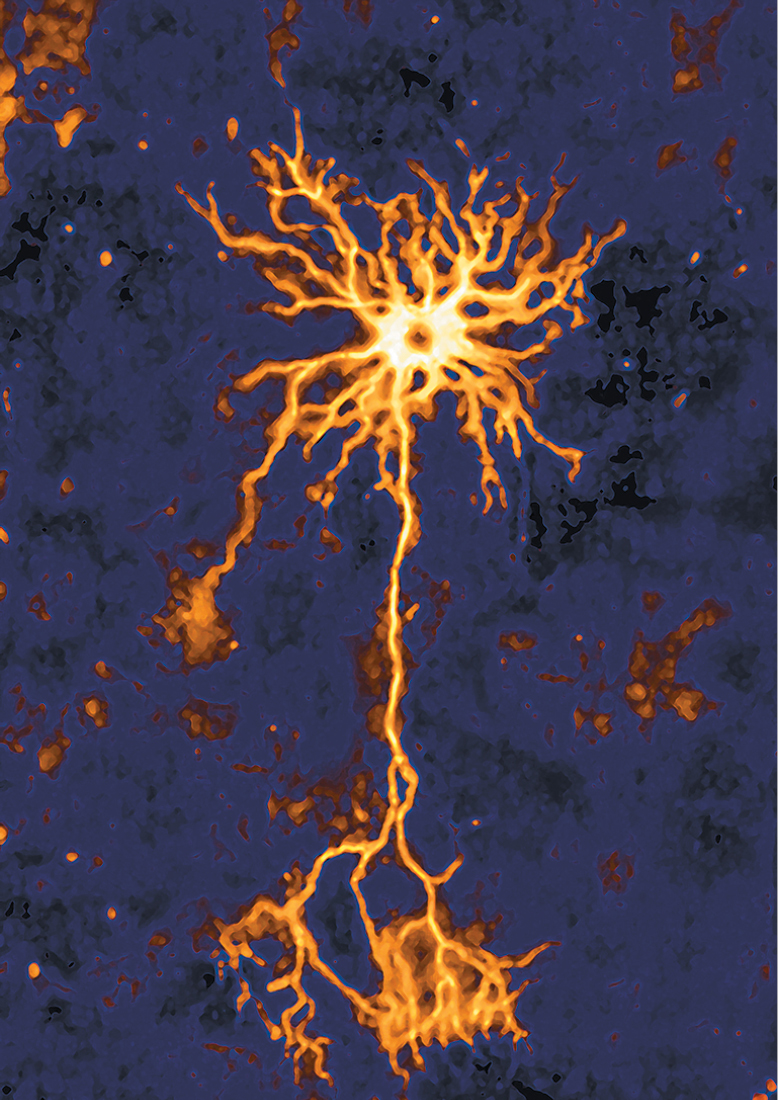LEARNING GOAL
Explain how neurons support the three functions of the nervous system.
LEARNING GOAL
Explain how neurons support the three functions of the nervous system.
The nervous system is a network of billions of cells in your brain and your body. This system is responsible for all aspects of what you think, feel, and do. The nervous system has three basic functions: (1) It receives sensory input from the world through vision, hearing, touch, taste, and smell; (2) it processes this information in the brain by paying attention to it, perceiving it, and remembering it; and (3) it responds to the information by acting on it.

IMPACT LEARNING PAUSE
Are You Attending?
Attending to all of the information that bombards you is impossible. Use selective attention to help your brain process what you need to learn.
These three functions are a result of processing in two divisions of the nervous system (Figure 2.1). The central nervous system (CNS) consists of nerve cells in the brain and the spinal cord. The peripheral nervous system (PNS) consists of the nerve cells outside of the brain and spinal cord. These two divisions are separate, but they interact constantly. For example, when you bite into an ice cream sandwich, the PNS registers those sensory signals and transmits the information to the CNS. The CNS organizes and evaluates that information, then directs the PNS to perform specific behaviors, such as taking another bite of the sandwich. These two divisions of your nervous system work together every moment of your life, letting you think, feel, and act.

The nervous system is split between the central nervous system and the peripheral nervous system. The central nervous system is made up of the spinal cord and the brain. The peripheral nervous system is made up of the somatic nervous system and the autonomic nervous system. The somatic nervous system is made up of skin, muscles, and joints that send signals to the spinal cord and brain. The brain and spinal cord then send signals to the muscles, joints, and skin. The autonomic nervous system is made up of glands and internal organs that send signals to the spinal cord and brain. The brain and spinal cord then send signals to the glands and internal organs. The autonomic nervous system is made up of the sympathetic nervous system and the parasympathetic nervous system. There is a figure with the brain and spinal cord highlighted showing the central nervous system. Then there is another figure with the nerves coming off the spinal cord to every part of the body highlighted, showing the peripheral nervous system.
FIGURE 2.1 The Nervous System
The two main divisions of the nervous system are the central nervous system (CNS) and the peripheral nervous system (PNS). The CNS consists of the brain and the spinal cord. The PNS consists of the nerve cells in the rest of the body. Together with their subdivisions, which are described in detail later in this chapter, these divisions of the nervous system allow you to (1) receive sensory input, (2) process it further, and (3) respond to it.
To understand the three functions of your nervous system, take a moment and describe the following: (1) What sensory input are you currently receiving? (2) How are you processing that information? In other words, what are you thinking about the sensory information you are receiving? (3) In what ways are you responding to the input? This exercise will help you understand how your nervous system is the core of all psychological experiences in your life.

It looks like a small ball with roots coming off all the sides of it and one long string going away from the ball supposedly towards another neuron. The roots are dendrites and the long string is the axon.
FIGURE 2.2 Human Nerve Cell
This is a human nerve cell, also known as a neuron. Neurons are the basic units of the human nervous system.
Neurons Are the Basic Units of Your Nervous System In your body, as in the body of every person, both divisions of the nervous system are made up of smaller units. These units are the nerve cells, or neurons (Figure 2.2). Individual neurons receive, integrate, and transmit information in the nervous system. Each neuron communicates with tens of thousands of other neurons, but neurons do not communicate randomly or by chance. Instead, they communicate selectively with other neurons. Through this selective communication, neurons form networks. The networks of billions of neurons sending and receiving signals make possible all the complex aspects of your mental activity and behavior. Through maturation and experience, these networks develop and strengthen. In other words, permanent functional connections form among groups of neurons. Those connections let the neurons process information efficiently.
You are able to think and act because neurons can communicate with each other. Neural communication is possible due to the neuron’s structure, electrical properties, and chemical properties.
Structure of Neurons Four parts of a neuron let it communicate with other neurons. These parts are the dendrites, cell body, axon, and terminal buttons (Figure 2.3 on p. 50).
The dendrites are short, branchlike extensions of the cell body. They receive signals from neighboring neurons. In the cell body, the information received from thousands of other neurons is collected and integrated (combined). Once the incoming information has been integrated in the cell body, electrical impulses are transmitted along the axon. Axons vary tremendously in length. For example, the longest axons stretch all the way from the spinal cord to each of the big toes. In everyday language, we commonly refer to neurons as nerves, as in the phrase “pinched nerve.” In this context, a nerve is a bundle of axons that carry information between the brain and other specific locations in the body. At the end of the axon are knoblike structures called terminal buttons.

The cell body is relatively circular and has many branching appendages called dendrites. The dendrites shoot off in all directions. The long branching nerve fiber called the axon is used to communicate with the nerve next to it through electrical impulses. The myelin sheath covers the axon. At the end of the axon, there are branching dendrites that have terminal buttons and synapses which connect with the dendrites of the next neuron.
FIGURE 2.3 Neuron Structure
Messages are received by the dendrites, processed in the cell body, transmitted along the axon, sent to other neurons via neurotransmitters released from the terminal buttons into the synapse, and then sent to the dendrites of the receiving neuron.
![]() Neurons and Action Potentials
Neurons and Action Potentials
Communication occurs between neurons at the synapse. The neurons do not actually touch each other in the synapse. Instead, they communicate by releasing chemicals at the terminal buttons. These chemicals, called neurotransmitters, cross the tiny gap between the sending neuron and the dendrites of the receiving neurons.
LEARNING GOAL CHECK: REVIEW